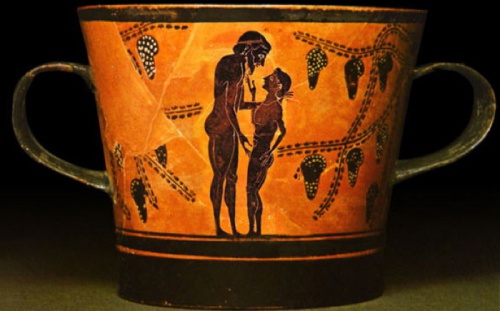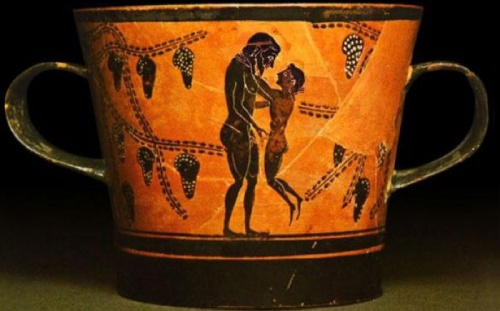Man with ephebe: Difference between revisions
From BoyWiki
No edit summary |
No edit summary |
||
| Line 6: | Line 6: | ||
---- | ---- | ||
[[Image:Man with Ephebe (6th century BC) Greece 01.jpg|500px|thumb|left|Image A]] | [[Image:Man with Ephebe (6th century BC) Greece 01.jpg|500px|thumb|left|Image A: '''Man Fondles Boy Who Touches His Chin''']] | ||
[[Image:Man with Ephebe (6th century BC) Greece 02.jpg|500px|thumb|Image B]] | [[Image:Man with Ephebe (6th century BC) Greece 02.jpg|500px|thumb|Image B: '''Boy Jumps For Joy''']] | ||
{{clr}} | {{clr}} | ||
*Note: the images shown above have been retouched to edit out the damage (See references 3 and 4). <ref>http://www.laits.utexas.edu/ancienthomosexuality/imageindex.php?topic_id=103</ref> <ref>http://www.laits.utexas.edu/ancienthomosexuality/imageindex.php?topic_id=104&pc=1</ref> | |||
==References== | ==References== | ||
{{reflist}} | {{reflist}} | ||
Revision as of 02:40, 26 September 2013
Man with ephebe is an example of Greek art dating from the 6th century BC. This ceramic cup by an unknown artist is housed at the Museum of Fine Arts, Boston[1] - from the collection of E.P. Warren. Ephebe from the Greek ephebos (ἔφηβος) is the term for an adolescent male.
The images of both sides of the cup (shown below) are interpreted as: "A man makes sexual advances to a boy (Image A), who responds with enthusiasm (Image B), jumping up to embrace the man." [2]


- Note: the images shown above have been retouched to edit out the damage (See references 3 and 4). [3] [4]